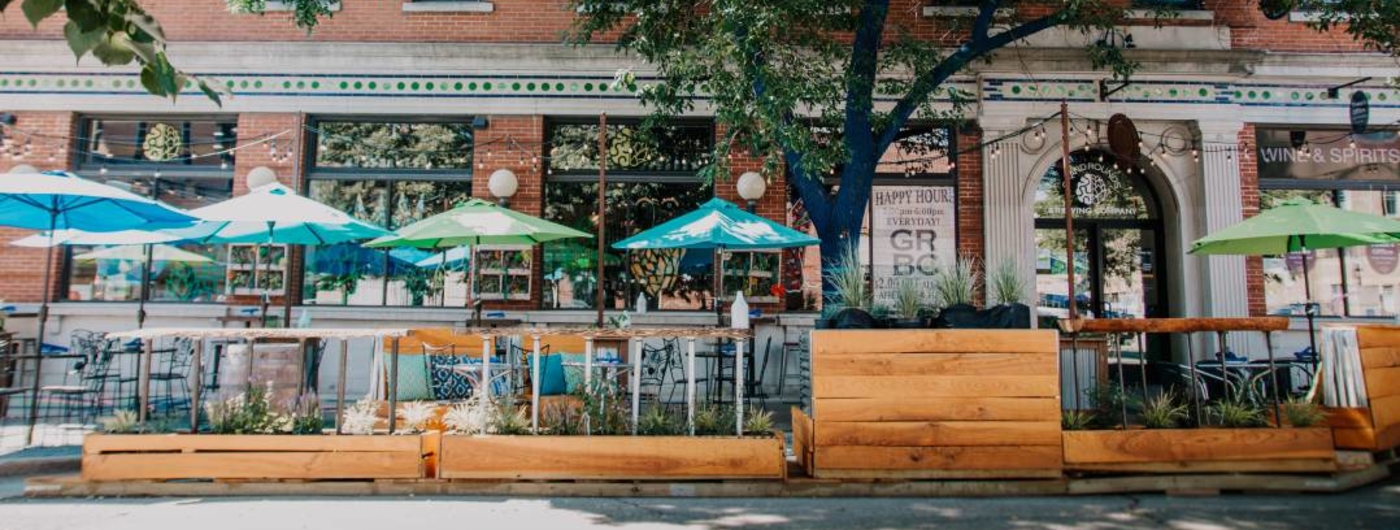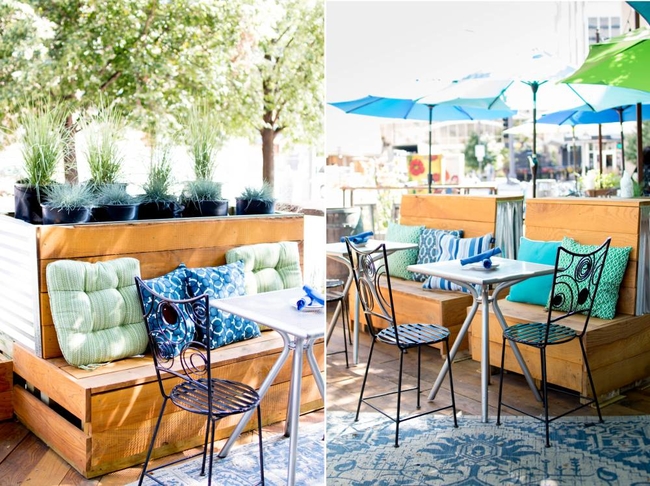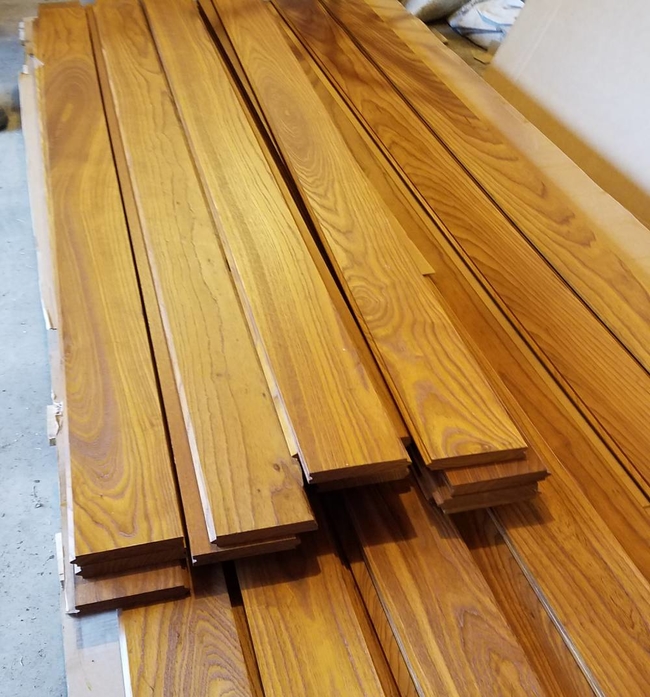Ash trees are a common sight along boulevards and city streets across Minnesota. As the invasive emerald ash borer threatens and kills more trees, processing urban ash wood locally and finding sustainable uses for that wood can be a challenge for towns and cities. A creative project in Rochester is showing how communities can think outside the box to address this challenge.
Local business owner Tessa Leung led a public-private partnership to bring attention to this issue and demonstrate the social and economic benefits of repurposing local ash wood, with support from the University of Minnesota (UMN) Extension Southeast Regional Sustainable Development Partnership (Southeast RSDP).
Leung worked with community and University partners over the past year to design and install a prototype parklet in downtown Rochester, repurposing ash wood that would have otherwise gone to waste. Popping up in cities and towns across the country, parklets are generally built on underutilized parking spaces and extend available sidewalk space and amenities for people and businesses. Located on Historic 3rd Street, Leung’s parklet was constructed outside of her restaurant Grand Rounds Brewing Company, which is now Nellie's on 3rd.
“We wanted to properly treat, reuse and test this wood, to see if we could use it more sustainably in our city and turn it into something useful for the entire community. We wanted to activate this space in front of our restaurant and test whether the wood would hold up for this parklet or other projects,” said Leung. “It has, beautifully.”
Trying something new
To bring her vision to reality, Leung connected with Angela Gupta, UMN Extension forestry educator based in Rochester, who brought expertise in urban forest management, invasive species and previous experience coordinating an ash wood demonstration project at Rochester Community and Technical College. In addition to UMN Extension, other key partners included locally owned Weinhold Family Tree Service and staff at the City of Rochester.
“This was a new process for us. We had to navigate grant writing and the permitting process, and so connecting with partners and city staff was instrumental in learning how we could make this work as a prototype. They gave us enough encouragement to give it a try,” said Leung.
“I was excited to connect with this project because we need to be trying new things and shifting how we manage our urban forests to be much more holistic,” said Gupta.
According to Gupta, cities typically treat dead ash trees as waste and pay to have them removed, chipped and burned. Ultimately, she described how the “whole chain bleeds money and resources.” With the help of projects like the Rochester parklet, Gupta hopes more communities start thinking about ash wood as “a value-add instead of garbage.”
“I didn’t think it would actually be that hard to repurpose this wood. Lots of people said, ‘You can’t do it.’ But why is that? Why do people say that? My response was always, ‘Has anyone tried?’” said Gupta.
In this way, local pilot projects like the Rochester parklet can provide a much needed proof of concept for demonstrating creative uses for ash wood.
“This project is a wonderful example of how a motivated business owner can work with their city and urban forestry professionals — to cut wood locally and use it locally for something good. You can do this. It’s not rocket science. It’s not that complicated,” Gupta said.
Good design shines
While construction and installation of Rochester’s ash wood parklet was complete well before the COVID-19 pandemic disrupted the community and economy in spring 2020, Leung and Gupta noted how the new gathering space has been an asset for social distancing this summer.
“Good design can shine most when the world feels like it’s crumbling,” said Gupta. “Wood is comforting, it feels warm. People have come by and taken wedding photos on the parklet, which I think speaks to how humans interact with exposed, natural wood. We sometimes forget that. So, I’m glad the parklet is this visible reminder showing us how we can repurpose and use wood differently in our cities and communities.”
The parklet’s popularity has been a welcome sign of the community’s resilience. City officials extended the project’s permit to allow the parklet to stay in place for another season.
“We should thank the coronavirus for part of this project’s success,” said Leung. “People have now seen the value of outside dining and gathering spaces. So, in a way, that’s really been a silver lining, if there was one in these times.”
Given the project’s success in showcasing how to repurpose ash wood locally and create a safe and sustainable outdoor space in these trying times, Leung hopes the work inspires similar projects. She invites others to build on the design.
“We want more people to do this. I kept asking, ‘How can I share this project and our designs with other people?’ We’ve given both the plans and contact information of our partners to some folks already, who expressed interest in replicating the parklet or building similar projects. It might be catching on. That’s what I’m hoping!” Leung said.
Reporting back on these successes and lessons learned, Leung presented about the project to the Southeast RSDP board earlier this fall. During that meeting, Southeast RSDP Board Chair Jane Olive noted the positive and tangible impact the project has had on the region.
“I’ve been down to the parklet, and it’s fabulous,” said Olive. “We’re so glad we were able to support this project. It’s been a great addition to the community.”
For questions or comments about this project contact Tessa Leung, tessa@grandroundsbrewing.com, or Angela Gupta, UMN Extension, agupta@umn.edu.
To learn more about emerald ash borer or Minnesota’s ash resource, check out the UMN Extension booklet: Managing Ash Woodlands.





